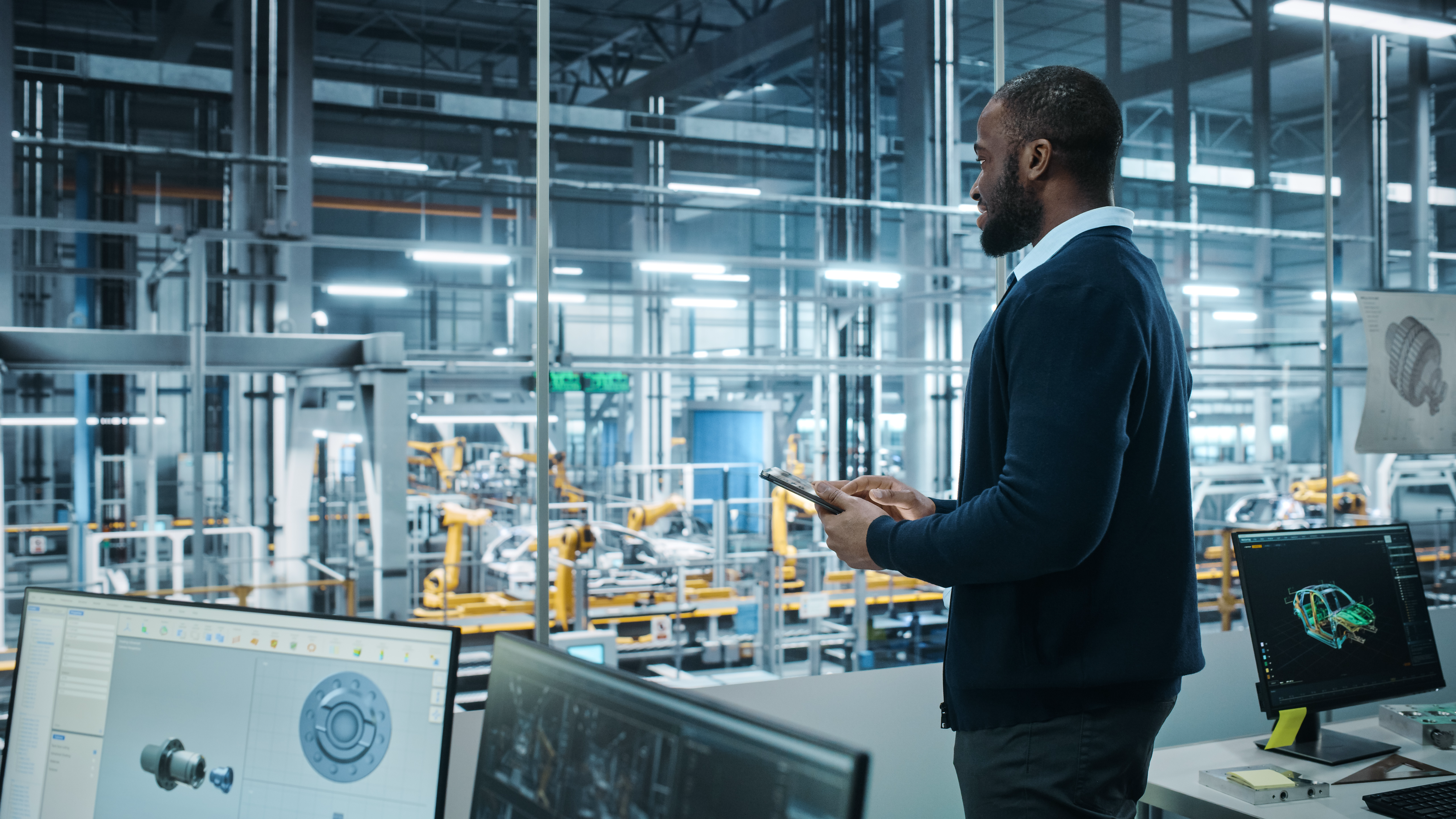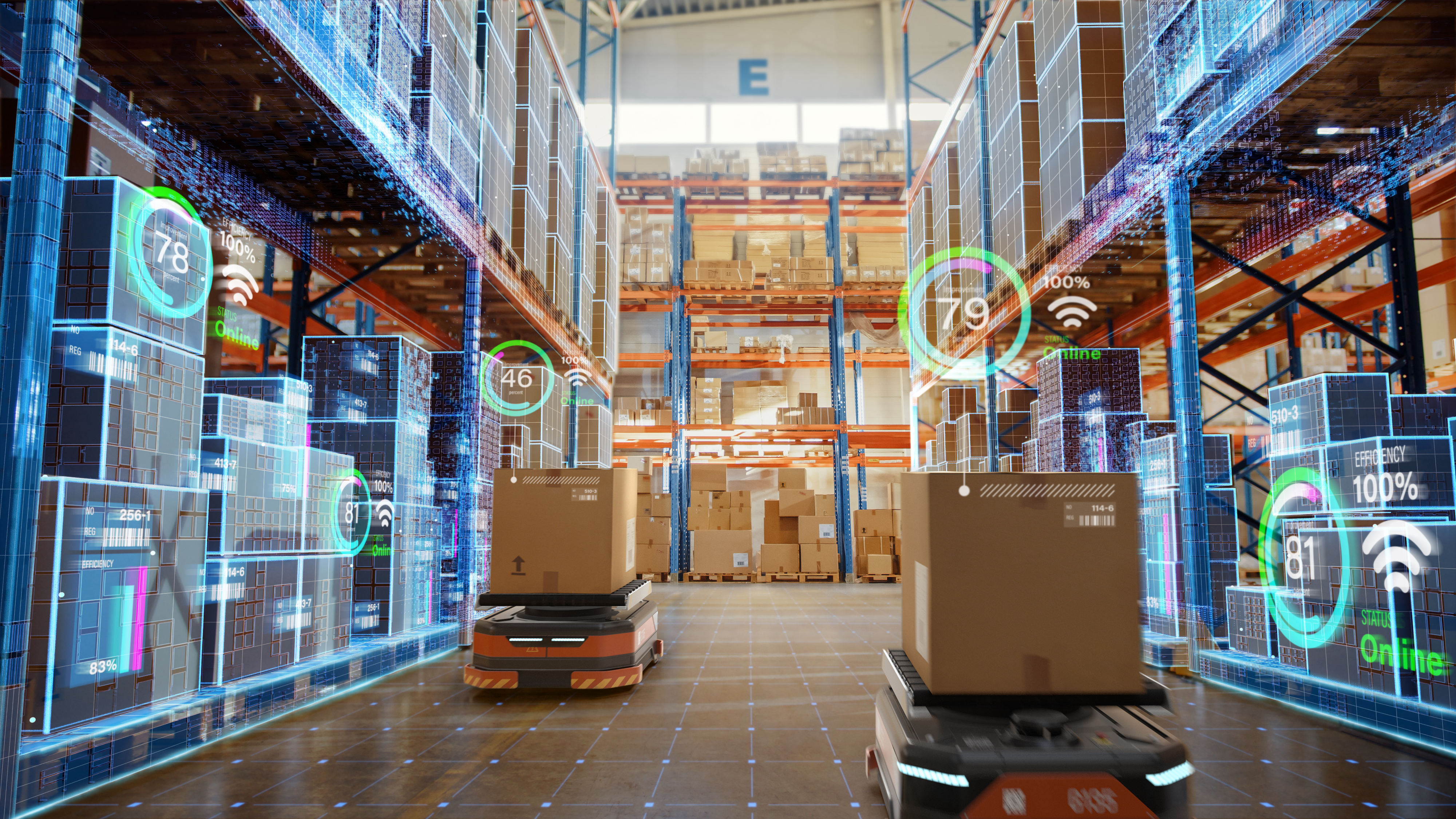6 Popular Computer Vision Applications
Computer vision, using the power of artificial intelligence, helps computers “see” and understand what they see. Helping computers see by simulating human vision enables numerous real-world uses that enhance productivity, security, and even health. Let’s dive into some popular computer vision applications across a variety of industries.
Computer Vision for Security
We all have security concerns on some level. Whether it’s for ourselves, our family, a business, a city, or a nation. Computer vision resolves these concerns at all levels with numerous applications that benefit us on a daily basis. Here are just a few:
Phone security
Facial recognition might be the most familiar application for computer vision (CV), and most of us now use this form of biometric security to access our mobile phones – and prevent unauthorized access.
Building security
Computer vision for business security and home security applications offers many benefits that human security cannot. And this goes beyond using biometrics.
A human can’t keep watch 24/7, and they can’t be everywhere at once. Investing in a security system that uses computer vision AI gives real-time insights and perspectives that are otherwise inaccessible. CV solutions include AI analysis of images and data so that organizations don’t have to rely solely on humans to monitor all sensors and cameras.
Military Defense
The purpose of computer vision, which is to identify and classify visual data, is hugely instrumental and beneficial for our military and defense. It benefits strategic efforts and enhances the safety and security of armed forces.
Solutions include drone and satellite surveillance. Currently, drones require human operations, but with the power of AI and computer vision, the military will eventually be able to employ fully autonomous drones. CV technology also helps process satellite imagery and can be used to track military installation and equipment in real time.
Other defense applications include fully autonomous land vehicles in the near future and increasing the accuracy of targeting systems.
Computer Vision in Sports
Computer vision is also widely applied in sports. With the power of machine learning and thousands and thousands of data inputs from games and players, AI programs can track players, balls, or pucks in real-time and make decisions that improve on-field performance.
Computer vision in sports speeds up and provides more complete analysis from a wide variety of angles, especially since it can capture the fast and often complicated movements of athletes and sports equipment more accurately and consistently than the human eye.
Computer vision programs can also improve team strategies by predicting what a player will do in certain situations or what positions are best for a certain game or match.
Finally, computer vision technology can help improve health outcomes by predicting injuries from certain movements. For example, fitness trainers can use 3-D pose estimation to assess exercises for an individual and avoid injuries from certain steps or postures.
Computer Vision for Mobile Technology
Computer vision is used in mobile applications for a variety of purposes, including scanning and reading barcodes, biometric phone access whether via fingerprints or facial recognition, diet and nutrition monitoring (by capturing images of what you eat), retail and grocery shopping, health vitals monitoring, and interior design. Here are a few, popular mobile applications that use CV technology:
Social Media Apps
Facebook, Instagram, Snapchat, and Pinterest use computer vision technology in different ways:
- Facebook uses CV to recognize people in your photos so you can tag them.
- Instagram uses CV to detect spam images and moderate content.
- Pinterest uses it to suggest boards to follow by analyzing photo uploads of a person, a space, or an object.
- Snapchat filters use computer vision and image processing. It uses specific models and algorithms to detect and recognize human faces and facial features. The filters can then add all the fun distortions and overlays.
Plant Identification Apps
Apps like PictureThis, Leafsnap, and Planta can identify plants with a picture, offer care advice and diagnose diseases or pest problems.
Beauty and Cosmetic Apps
Companies like Coty and Clinique use computer vision to make makeup and cosmetic recommendations for users. The apps can see a person’s face, skin tone, etc. and offer product suggestions or even let consumers virtually try on a product. Similarly, Madison Reed helps users choose the right hair color by analyzing their skin tone and complexion.
Computer Vision in Smart Cars
Operating a vehicle is an activity where the ability to accurately see and interpret what we see is of paramount importance. Computer vision has progressed vehicle safety by leaps and bounds and according to experts laid the groundwork for truly autonomous vehicles.
Gilberto Rodriguez, Director of Product Management at Imagination Technologies, said, “computer vision has developed techniques that enable the capture and processing of video to automatic tasks [and it’s] created the foundations for AI-based decision making in self-driving cars.”
CV algorithms combined with sensors and cameras help cars detect and identify pedestrians, road signs, lanes, obstacles, buildings, and more to alert the driver, preventing accidents and keeping people safe. While safety challenges in the development of autonomous vehicles still exist, computer vision with advanced machine learning will soon do all the driving.
Computer Vision in Health Sciences
AI technology in healthcare is improving research, procedures, and outcomes. Computer vision is being applied in all corners of health sciences and can even fill in talent gaps when organizations face staffing shortages. Here are four examples:
Medical Image Analysis
Computer vision aids in radiology, CT, and MRI analyses. It can read and annotate images with greater speed and accuracy than the human eye, and it can even identify things that may otherwise be overlooked.
Cancer Detection
Similarly, computer vision coupled with deep learning has advanced cancer and tumor detection and diagnosis. Often, there are not enough clinicians to efficiently analyze test results, like mammograms. Again, CV technology speeds up analyses, increases accuracy, and fills in personnel gaps.
Operation Tracking and Guidance
Computer vision is also being used during surgeries to record operations and track tools in order to reduce errors. CV also aids medical professionals with machine vision during surgeries.
Research and Development
In addition to continuing research in CV technologies for improved detection and diagnosis procedures, computer vision also supports other healthcare research, by being able to count and analyze faster and more accurately than a human might.

Computer Vision in Manufacturing
CV technology offers a myriad of uses in the manufacturing industry. They all enable better safety, better productivity, better accuracy, and better management:
- CV applications can help keep track of supplies and count stock so that manufacturers know when parts or inventory is getting low.
- Computer vision also aids barcode analysis, streamlining the process and reducing the chance of errors and the time that’s usually spent on this task.
- CV helps manufacturers ensure items are correctly packaged and that packaging is not damaged before it heads off to its destination.
- Computer vision with AI analysis keeps workspaces safer. Rather than having humans monitor cameras and video feeds, AI can detect any non-compliance or safety issues and alert the proper channels.
- Maintaining equipment is critically important for optimum productivity and employee safety. Doing this manually takes long hours and opens the door for errors. Using CV to monitor machines and alert on any necessary maintenance is a great asset for manufacturers.
- Detecting defects is another vital step in the manufacturing process that can eat up precious resources. Using CV technology to do this speeds up production, improves accuracy, and can even help a company save money.
- CV systems can also aid manufacturing by guiding die-cutting tools or building 3D models to ensure products meet standards.
Computer Vision for Logistics and Distribution
Logistics and distribution companies can benefit greatly from artificial intelligence support with computer vision. In some cases, it can fully automate processes along with decreasing errors and improving efficiencies. Here are some examples:
- Optical character recognition (OCR): Computer vision can ‘read’ handwriting and convert it into digits. It can also digitize paper documents via feature extraction and pattern recognition.
- Trace and track objects or goods: Computer vision helps by reading 1D and 2D codes, labels, container codes, and license plates.
- Evaluate capacity in trucks and other transport vehicles as well as parking lots and docks
- Evaluate dimensions for packages and pallets
- Determine capacity in warehouses, storage bins, and other containers
- Prevent accidents by offering rear, birds-eye or 360 views so operators can detect other people, obstacles, or vehicles in the area
- In warehouses where robots are used for automated processes like sorting, loading, and packing, computer vision enables accurate detection and identification.
- As with other computer vision applications, it can maintain security by monitoring facilities and operations, proactively alert when machines malfunction or when equipment maintenance is required, and it automates quality assurance processes.
Automated Environment and Systems Management with Lunar Eye
Lunar Eye enables manufacturers and logistics companies to secure and monitor facilities, personnel, and equipment with a multi-faceted, computer vision platform. It also improves workflows. Here are just a few benefits of Lunar Eye:
- Environment designer and production planning: Plan better implementation with camera set-up, zones, and workflows. Use AI-based reports to improve production based on usage, predicted maintenance, and system forecasts.
- Equipment management: Assign equipment to different cameras and zones to increase efficiencies and keep operations running smoothly.
- System monitoring and alert management: Get real-time analysis of system health and fast alerts for specific events. Use Lunar Eye to track products on the line to improve accuracy and prevent errors or defects.
- Environment monitoring: Use Lunar Eye for facial recognition and scene recognition so you can keep your workspaces and employees safe.
Check out some real-world examples where Lunar Eye has helped improve day-to-day processes and production: https://lunar-eye.com/lunar-eye-use-cases/
